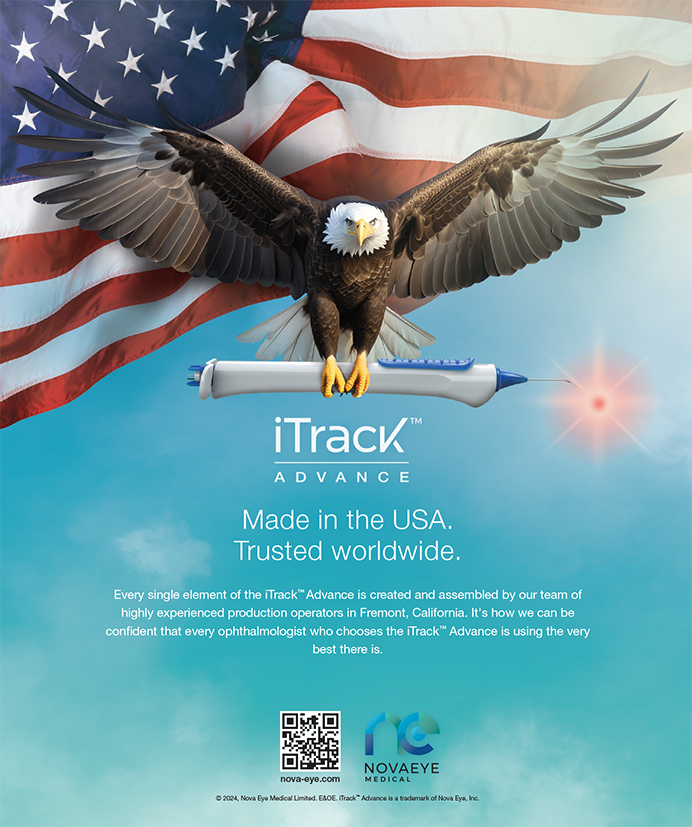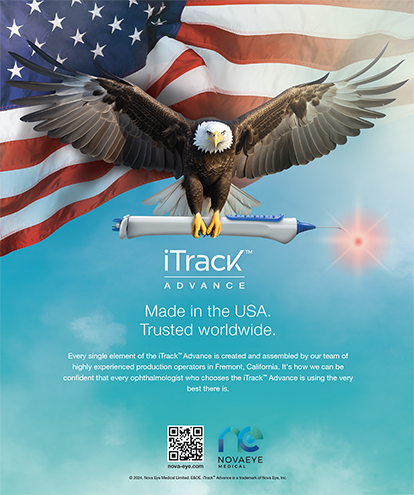We are several years into the commercial launch of the premium IOL channel, and the discussion about why these lenses' modest market penetration is not higher seems to center on two culprits: the technology and the economy. Practitioners taking part in this conversation begin many sentences with the words, if only; they are dreaming of the magical no-compromises IOL or a robust economy in which patients are eagerly willing to part with their hard-earned money in order to receive an upgraded lens in their cataract surgery. I would like to offer a different perspective with the hope that you as surgeons all re-examine your assumptions regarding how the premium IOL market can develop.
TECHNOLOGY
There is no question that the IOLs available tomorrow will be more advanced than the ones existing today. During the next 5 to 10 years, these lenses will undergo a flurry of innovation similar to (and perhaps even more robust than) that of the excimer laser, as evidenced by the 15 or more accommodating IOLs under development. That doesn't make today's premium IOLs any less valuable, however. Recall the first Visx and Summit laser platforms. Although they pale in comparison to today's lasers in multiple respects, in their day, they provided surgeons and their patients with new and exciting options for vision correction. We should keep the original Summit Apex and Visx 20/20 lasers in mind before judging today's premium IOLs too harshly. These first-generation offerings are essential to the launch and eventual success of the technology in the marketplace.
SAGGING ECONOMY
Although the overall economy has an amplifying effect on elective procedures that is much like a rising or sinking tide, consumers reveal some interesting insights regarding cataract surgery. SM2 Strategic (Pleasanton, CA) and the Vision Research Center (Philadelphia, PA) are attempting to understand awareness of, interest in, and price sensitivity around premium IOLs. Preliminary data from an online survey of 250 consumers who have recently been diagnosed with or treated for cataracts show that the majority of them still believe they will have to wear glasses postoperatively. When briefly educated on the benefits of a premium IOL, the majority of consumers are willing to pay more for clear vision at all distances. One in three survey respondents said they would be willing to pay $2,000 or more per eye to achieve these benefits. Furthermore, consumers are much more interested in function than they are in fashion when it comes to reducing their need for glasses. This survey will be published and presented by SM2 Strategic at the upcoming ASCRS meeting in San Francisco (and will also be available at www.sm2strategic.com at a later date).
For you as surgeons, the survey's results thus far have two significant implications. First, they suggest that you should invest more time in educating your patients at the time of the doctor-patient visit, at the location of your referral sources, and in your communities. Do not assume that the awareness among your staff has yet trickled down to your patient base. Second, the survey's results indicate that this segment of consumers has a willingness to pay once they understand the perceived value and benefits of the premium IOL. More than one in four responded, "Money is no object when it comes to my eyesight." Among those with private insurance, that ratio increased to nearly one in two. Based on the survey data, a practice goal of 20% to 30% conversion to a premium IOL among current patients is reasonable.
As a footnote, these data have been collected since the new year, coinciding with the news surrounding the deteriorating economic conditions.
LANGUAGE
For the premium IOL channel to grow, you also need to change the language you use when speaking with patients. I credit J. Trevor Woodhams, MD, and Harvey Carter, MD, with helping me understand just how critical the words and phrases are that surgeons use when counseling patients on their options. In reality, a cataract is the end stage of a lenticular dysfunction and disintegration process that began at the time of presbyopia. Its diagnosis and treatment at age 65 is a function of government regulation (to justify reimbursement) rather than biological function (to satisfy a need). In the free market afforded to you as surgeons, it is critical to help patients understand that this process of lenticular dysfunction has been occurring gradually over the years, with image quality degrading along the way. This process does not begin with a cataract; the light scatter, lack of flexibility, and brittleness began years earlier with the onset of presbyopia. Using this type of language completely reframes the discussion from "Do I have a cataract?" to "Should I fix this problem?" Rather than make it a Medicare or insurance-based decision, it becomes a lifestyle benefit choice. (Had there never been government support for the procedure, it would have always been the latter decision.) With the advent of the premium IOL and the change in regulations allowing surgeons to charge separately for these advanced implants, it is once again a lifestyle decision for the patient.
SUMMARY
Although not every patient is a candidate for a premium IOL, there is an absolute willingness among consumers who have been diagnosed with cataracts to learn about and take advantage of the new technology. This has been realized by the few practices I am aware of that routinely convert half or more of their cataract cases to premium IOLs. A more modest and achievable goal, again, based on consumer sentiment, is a 20% to 30% conversion rate. This would be a dramatic increase over the current 5% industry average. Achieving higher conversion rates is less dependent on the economy and the current technology and completely in the control of you, the surgeon, and your staff and how and when you communicate the benefits to your patients.
For more ideas on how to incorporate premium IOLs in your practice, visit my Web site the Premium Experience Network (www.premiumeyesite.com).
Shareef Mahdavi is the president of SM2 Strategic and a certified expert in the experience economy. He recently launched The Premium Experience Network to help surgeons and practices do a better job of preserving value for their services. Mr. Mahdavi may be reached at (925) 425-9900; shareef@sm2strategic.com.


